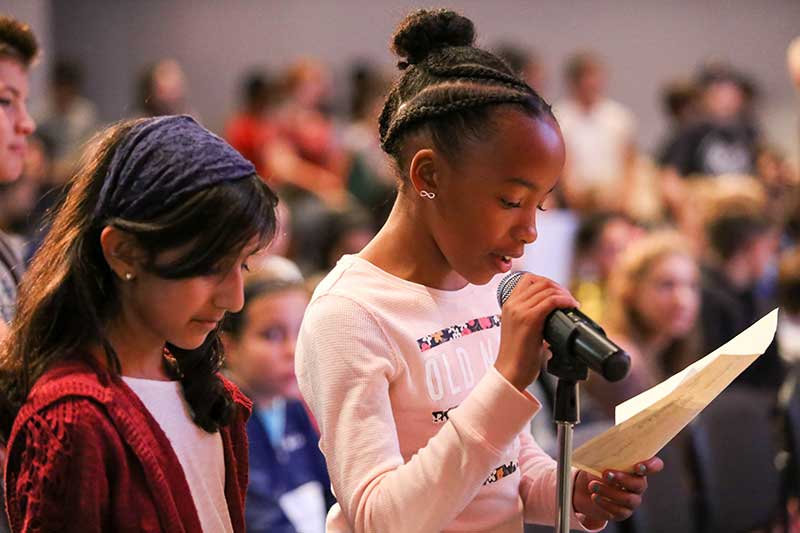[wc_button type=”SUCCESS” url=”http://phl17.com/2016/11/11/local-school-hosts-mock-electoral-college-convention/” title=”Watch TV coverage here from PHL17″ target=”self” position=”float”]Watch TV coverage here from PHL17[/wc_button]
On Election Day, November 8, the Middle School held a Mock Electoral College Assembly so students could study the presidential election process in an engaging, nonpartisan, and research-driven manner. Since students already had the opportunity to express their political perspective and vote for the presidential candidates during the quadrennial Mock Primary Election in January, this academic program was singularly focused on predicting the candidate for which each state would cast its electoral votes. Each Middle School Advisory group was assigned a number of states, and the students analyzed the historical data to project the actual electoral college results accurately.
To begin the special assembly, the Middle School joined together to sing the national anthem and then enjoyed a special performance of “Let Freedom Ring” by the Fifth Grade Choir. Then, as Middle School Director Kimberly Clarkson announced the roll call of the states, each state delegation read aloud its declaration statement to which candidate their state’s electoral votes would be cast, modeled after the process at the national party conventions. The final predictive results were 352 electoral votes to Hillary Clinton and 186 electoral votes for Donald Trump. Compared to the actual election results, the Middle School projected 45 accurate calls (including Washington D.C.) and 6 inaccurate calls.
“The goal of the assembly was to highlight the electoral vote, to approximate a party’s national convention, to learn about our 50 states and D.C., and to do sufficient research so that we could aim to be as close to the final actual electoral vote as possible,” said Mrs. Clarkson.
The project was scaffolded so the middle schoolers could conduct their research and review archives of the electoral and popular vote distribution, state polls, current political leadership for each state, geographic party affiliations, as well as state facts and symbols to include in the declaration statement during roll call of the states. Students also designed posters to reflect state history, priorities, and the candidate for whom they were casting their state’s electoral votes. History classes supplemented the program by dissecting the electoral college and discussing its benefits and disadvantages in U.S. elections.
Following the Mock Electoral College Assembly and the presidential election, Mrs. Clarkson reemphasized the value of authentic, hands-on learning experiences for students.
“Our Mock Electoral College was a good starting point with all students to understand how they can have a voice in our country,” said Mrs. Clarkson. “As a Friends school we must continue to help them see how they can impact their world and do so with respect and kindness.”

